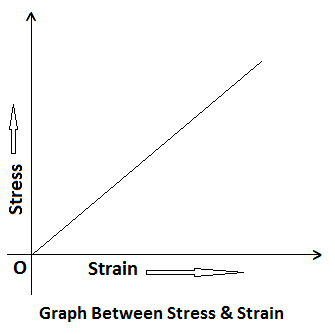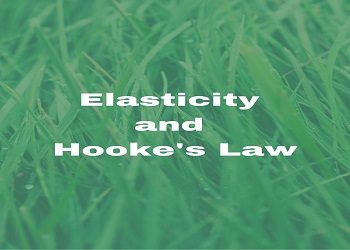Table of Contents
Elasticity and Hooke’s Law:
Elasticity:
When an external force acts on a body, a change in length, volume or shape of the body takes place. On withdrawing this external force, the body regains its original length, volume or shape. This tendency of a body by virtue of which it suffers a change in shape or size under the influence of an external force and again comes back to its original position, after the removal of the external force is known as elasticity. Examples of elastic bodies are rubber, steel, spring etc.
The property of a body to regain its original length, volume or shape after the deforming forces cease to act on it is referred to as elasticity. The elasticity of a body is measured by the ratio of stress developed to strain produced.
Elastic Limit:
This is the maximum stress that a body can bear and yet return to its initial size and shape when the deforming forces are removed. It may be defined as the smallest stress which will produce a permanent change in the shape or size of the body. In other words, an elastic limit is the limit beyond which a body behaves as a plastic body having no tendency to regain its original shape or size after the external deforming forces cease to act on it.
Hooke’s Law:
This law was enunciated by a British scientist, Robert Hooke (1635-1703). It states that within the elastic limits, the stress applied in a solid body is directly proportional to the strain produced in the body.
Mathematically, Hooke’s law is stated as-
Stress ∝ Strain
or Stress / Strain = a constant = E (say)
Where, the constant (E) is known as co-efficient of elasticity or Modulus of elasticity of the body.
The value of (E) depends upon the nature of the material. Higher the value of (E), more elastic is the body.
We know that stress is proportional to strain. The stress is the force per unit area (F / a ) and the strain is the change in length per unit length (l / L). This may be expressed as-
F / a ∝ l / L
For small values of the external force (F), and area of cross-section (a), the length (L) practically remains the same. Hence, Hooke’s Law is reduced to the form-
F ∝ L
or Load or tension ∝ extension
Thus, Hooke’s law may also be stated as “within elastic limits, tension is directly proportional to extension.” If a graph is plotted between stress (load) and strain (extension), a straight line is obtained within the elastic limits.










Comments (No)